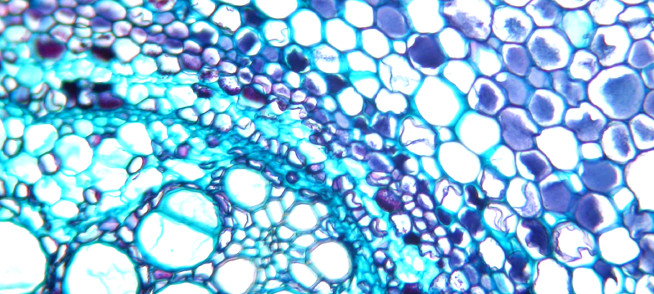
Fluid Mosaic Membranes
Fluid Mosaic Membranes
Objective
This unit aims to make you familiar with the structure of the cell membrane as described by the fluid mosaic model.
Fluid Mosaic Model
It describes the structure of the cell membrane. According to this, the membrane is made up of lipid bilayer in which protein molecules are floating.
It is called fluid because the membrane is liquid thus the lipid molecules are floating within it.
Mosaic because protein molecules are embedded in lipid-like mosaics.
Features Of Fluid Mosaic Model:
1. The cell membrane is made by phospholipid bilayer. The hydrophilic part is facing outside of the membrane while hydrophobic parts are present inside.
This is because the intracellular and extracellular compartment is made up of water.
2. Some phospholipid tails are saturated while some are unsaturated. The amount of unsaturated fatty acid chains present will determine the fluidity of the membrane. More unsaturated fatty acids mean it will be more fluid in nature.
3. Proteins molecules are floating in phospholipid bilayer like icebergs. Although some of them are fixed like islands.
4. Cholesterol is also present in the phospholipid layer. It controls the fluidity of the cell membrane.
5. Most of the proteins and lipids also have short-chain carbohydrates attached to them hence called glycoproteins and glycolipids.
Type Of Proteins
There are two types of proteins present:
1) Intrinsic Proteins
Intrinsic proteins span the whole membrane.
2) Extrinsic Proteins
Extrinsic proteins are present on the outer layer or inner layer only.
Roles Of Components Of Cell Membrane
The cell membrane is composed of different molecules. Each of them plays a different role.
1) Phospholipids
Phospholipid makes the basic layer of the cell membrane. It has a hydrophobic center that forms a barrier preventing polar substances from crossing the membrane.
2) Cholesterol
Cholesterol has the same amphipathic (having both hydrophobic and hydrophilic end) structure. Thus, it fixes correctly with phospholipid molecules. They help in controlling the fluidity of the cell membrane.
They are also important for providing mechanical support to the membrane as they help in sticking phospholipids molecules together.
3) Proteins
They have different roles. Some proteins act as channels to allow passage to polar molecules. They can be opened or closed.
Others are carrier proteins. These proteins actively transport polar molecules in and out of the cell membrane.
Some membrane proteins also have enzymatic properties. Like those present in the cell of intestinal walls. They catalyze the break down of different molecules.
4) Glycoproteins And Glycolipids
Glycoprotein act as receptors that bind with particular molecules. Like cells on liver and muscles have receptors for insulin.
Insulin binds with these receptors and produces a series of chemical changes inside the cell. Thus, they help in the cell to cell communication.
They also function as antigens through which cells recognize each other. Different cells have different antigens.
Function Of Cell Membrane
It separates intracellular component from the extracellular component.
It helps in cell signaling.
Selectively permeable thus allow transport of specific molecules only.
